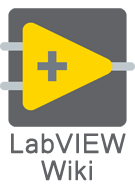Get LV Class Name function: Difference between revisions
Appearance
mNo edit summary |
mNo edit summary |
||
| Line 1: | Line 1: | ||
{{stub}} | {{stub}} | ||
{{TOCright}} | {{TOCright}} | ||
{{LabVIEW Palette Object Information|palette=Functions Palette/Programming/Cluster, Class, and Variant{{!}}Cluster, Class, and Variant palette|type=vi}} | {{LabVIEW Palette Object Information|palette=Functions Palette/Programming/Cluster, Class, and Variant{{!}}Cluster, Class, and Variant palette|type=vi|icon=luster, Class, & Variant Palette - Get LV Class Name.png}} | ||
The '''Get LV Class Name''' function returns the name of the class of the object. | The '''Get LV Class Name''' function returns the name of the class of the object. | ||
Revision as of 20:21, 29 June 2020
| |
This article is a stub. You can help LabVIEW Wiki by expanding it. Please improve this article if you can. |
| Object information | |
|---|---|
| Owning palette(s) | Cluster, Class, and Variant palette |
| Type | VI |
| Requires | Basic Development Environment |
| Icon | File:Luster, Class, & Variant Palette - Get LV Class Name.png |
The Get LV Class Name function returns the name of the class of the object.
Usage
| |
Specific use cases for this function. |
Best practice
| |
Add other best practices for this function. |
History
| |
History information is needed. What changes have occurred over previous versions? |
| Version | Change(s) |
|---|---|

|
More info to come. |
See Also
| |
Add links to internal wiki pages that would also help. |
External Links
| |
Add links to external resources that would also help. |
